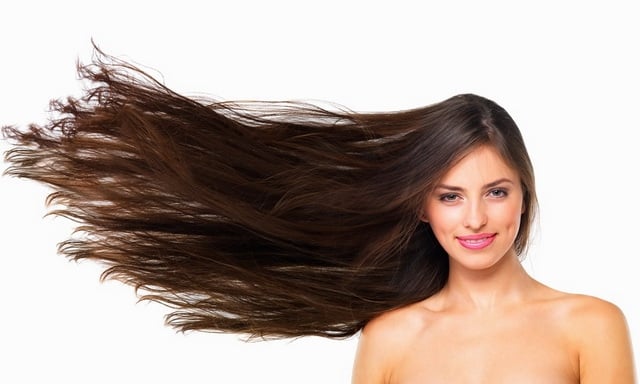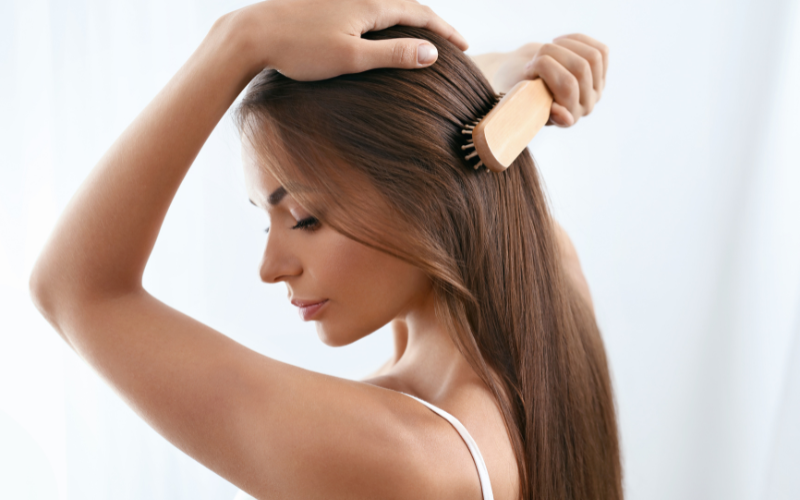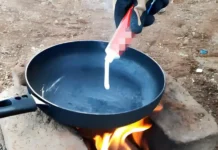To restore thin, weak, and brittle hair, a comprehensive approach to hair care is necessary, encompassing both external and internal strategies.
External Care
Firstly, it is essential to adopt proper hair care practices to minimize damage to the hair and scalp. When brushing your hair, brush from the front of your forehead towards the back of your neck; doing this about 200 times a day not only keeps your hair tidy but also promotes blood circulation in your scalp. As for washing your hair, avoid the habit of scratching with your fingernails. Instead, gently massage your scalp with your fingertips to remove excess oil and dirt, which tend to accumulate there. Adjust your washing frequency according to your scalp’s condition, and avoid letting your hair become too oily, as this can weaken the hair roots and lead to hair loss. After washing, consider using an absorbent hair cap instead of a towel to reduce hair breakage caused by towel drying.

It is important not to stick to just one type of shampoo and conditioner. Instead, opt for 3-4 suitable products and rotate their use to prevent your scalp from getting used to a particular formula while maintaining a healthy balance. Additionally, you can apply freshly grated ginger to your scalp once in a while, leaving it on for 5-10 minutes before rinsing. The warming sensation stimulates scalp circulation, promoting faster and thicker hair growth.
Pay attention to seemingly small habits, such as regularly changing your pillowcases to minimize oil and bacterial transfer to your scalp, switching your hair part to avoid tension-induced hair loss, and maintaining a consistent sleep schedule. The hours between 10 p.m. and 2 a.m. are considered the “golden hours” for hair regeneration.
Internal Care
In tandem with external care, a nutritious diet forms the foundation for healthy hair. Hair is often considered an extension of the blood, so consuming blood-nourishing foods can strengthen your locks. Incorporate dishes like “ngũ đỏ” soup (made with red beans, jujubes, goji berries, rose petals, and red sugar), apple soup with astragalus, or peanut milk with red beans into your menu.

Black-colored foods are also beneficial, as they tonify the kidneys, which are linked to hair health in traditional medicine. Consider making a porridge with black beans, black sesame seeds, black rice, black mulberries, black goji berries, and walnuts, or simply add black sesame powder to your daily diet. Additionally, ensure you’re getting enough protein from meat, fish, eggs, dairy, and beans to provide the building blocks for keratin, the key structural component of hair. Aim for a minimum of 50g of protein per day.
Vitamins and minerals also play a crucial role. Vitamin B, found in bananas, spinach, and broccoli, supports melanin and keratin production, while Vitamin A in carrots, apples, and tomatoes promotes hair growth. Zinc, abundant in eggs, beef, lamb, and peanuts, regulates oil production and encourages new hair growth. Instead of refined carbohydrates, opt for whole grains and potatoes to maintain stable hormone levels, thereby reducing hair loss effectively.
By combining external care with internal nourishment, you’ll be well on your way to achieving thick, strong, and voluminous hair for the long term.
Do you want me to include **captions for the illustrative images** as well, similar to previous articles (for 10 images), to enhance the completeness of the article?

































